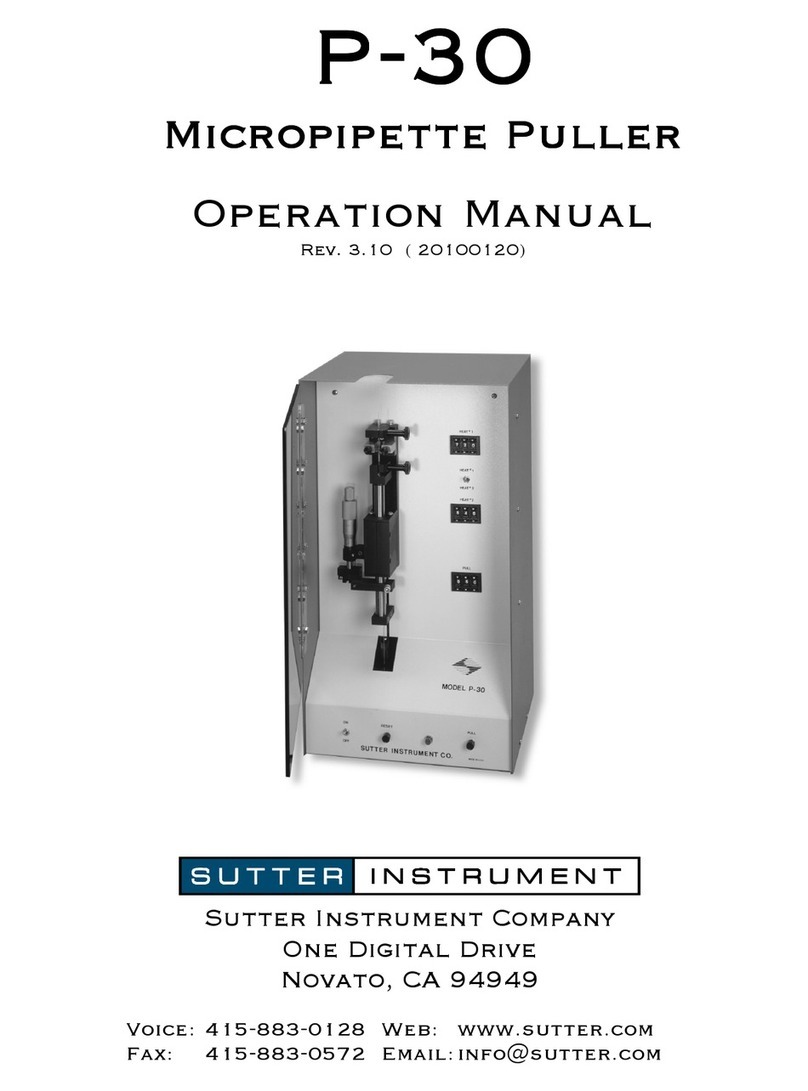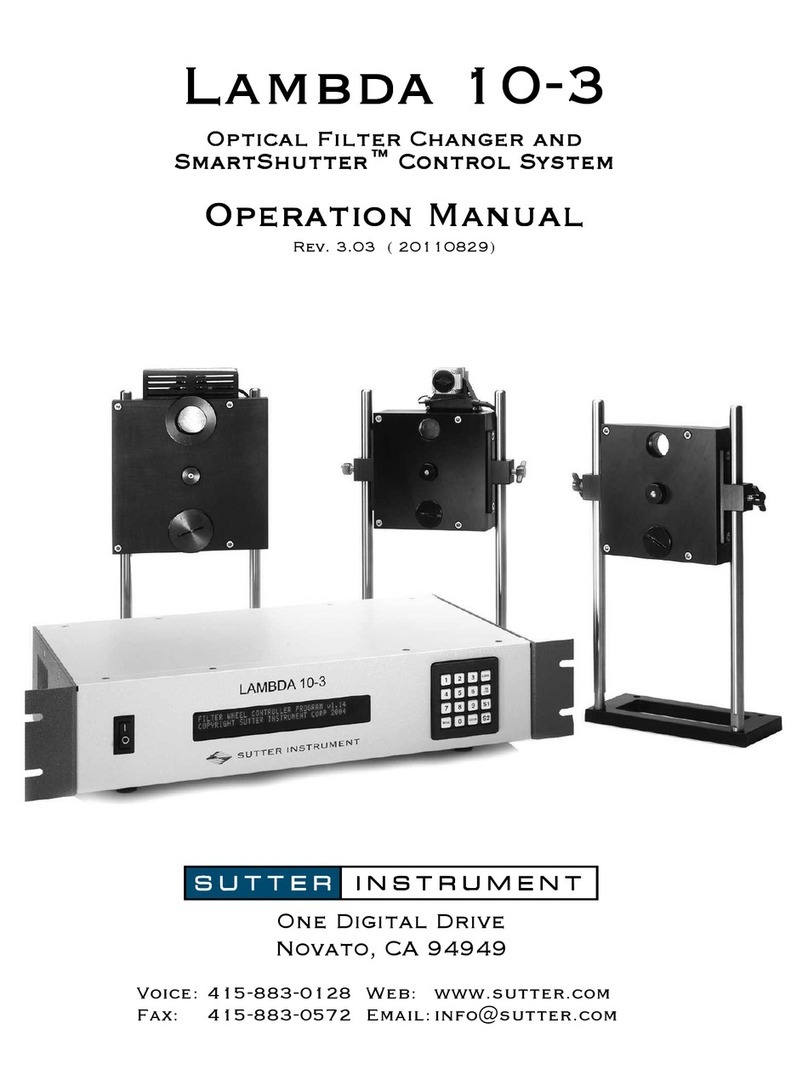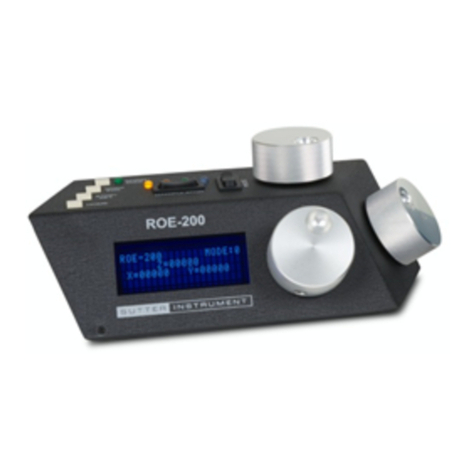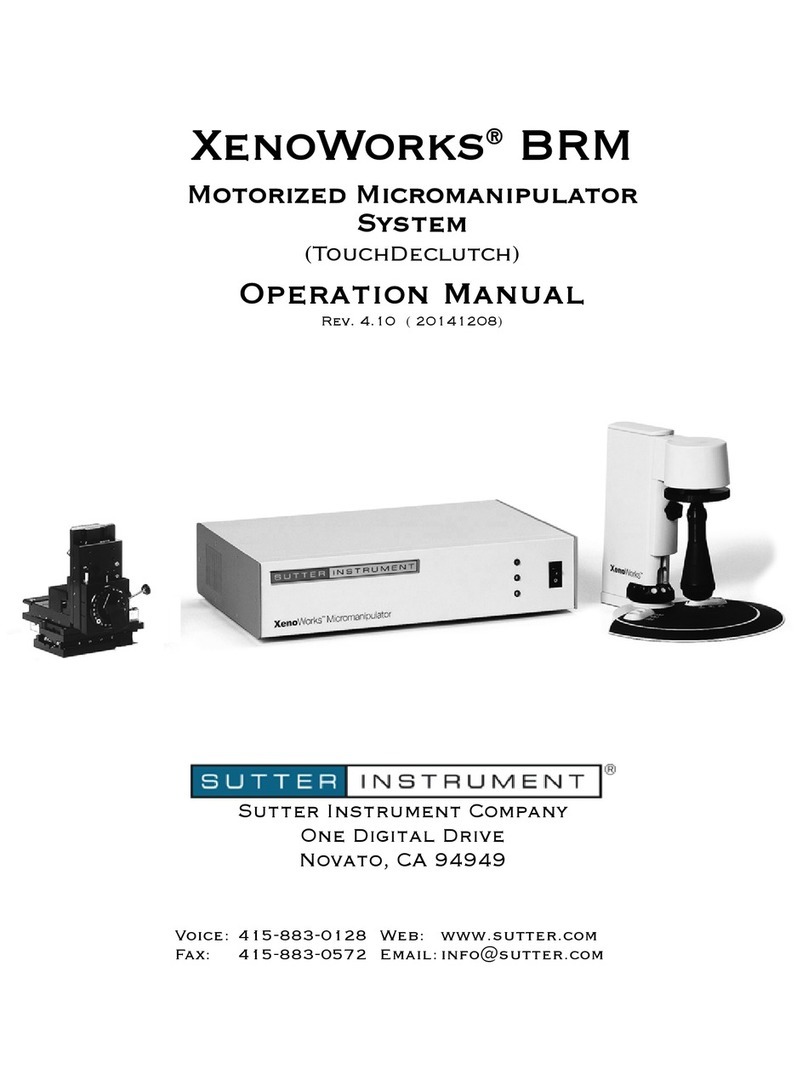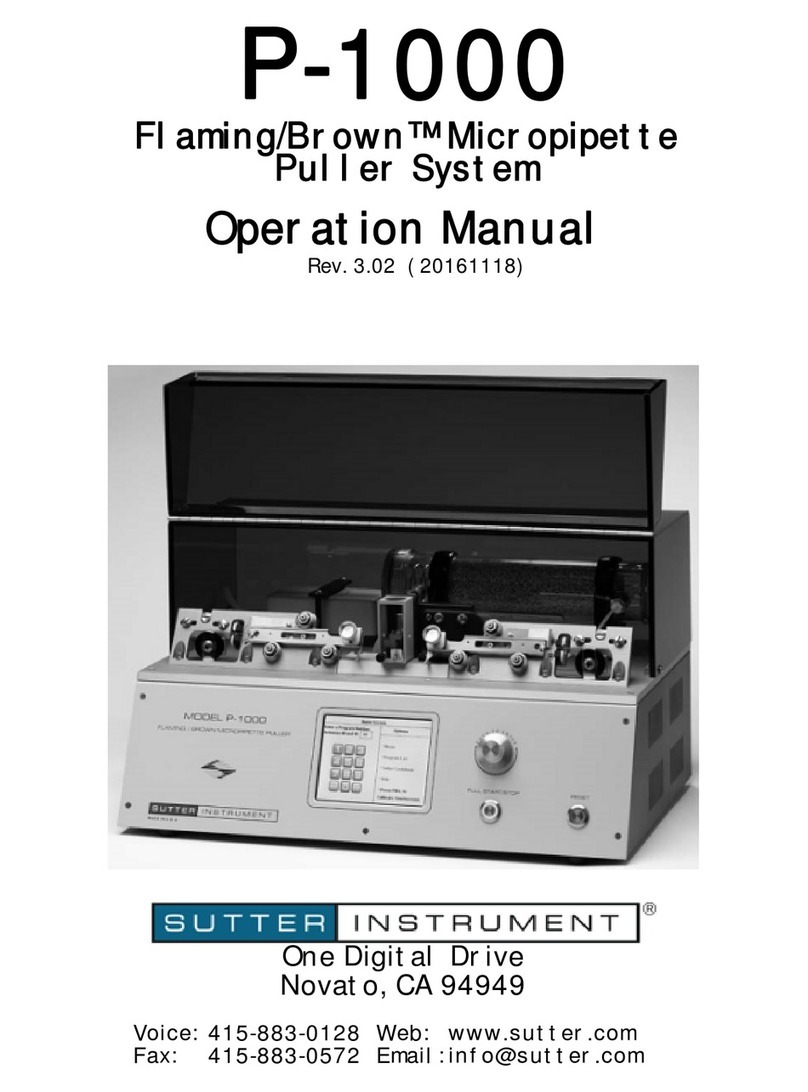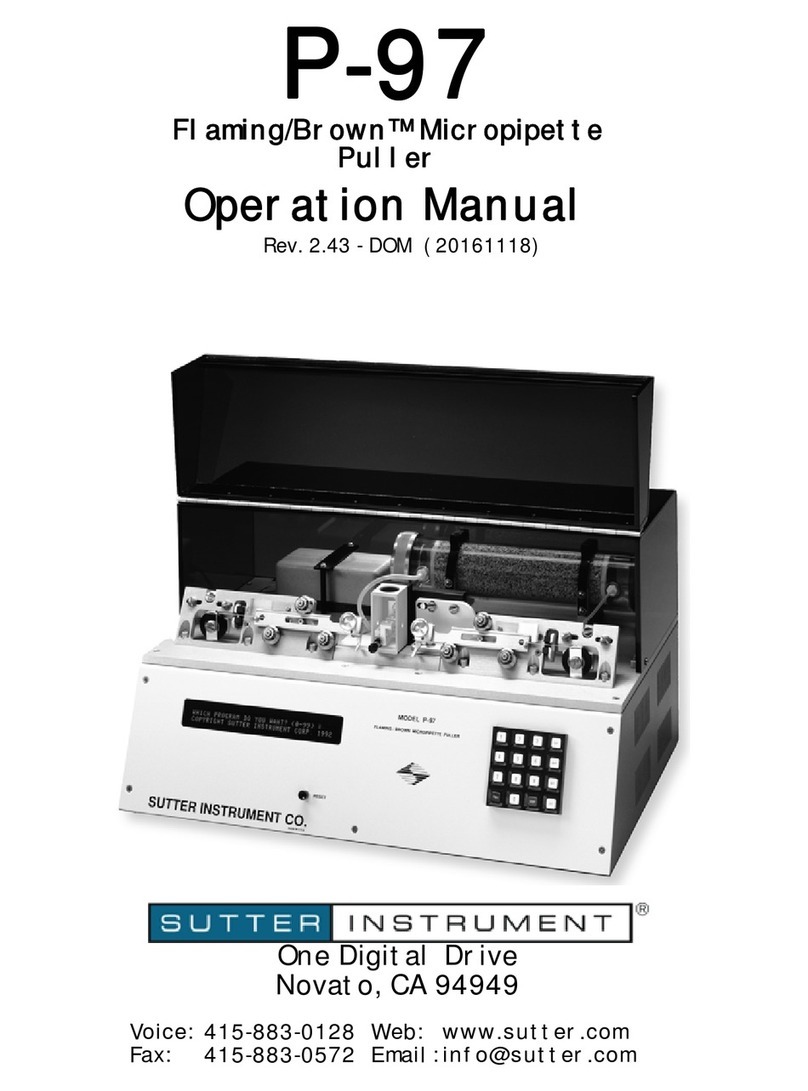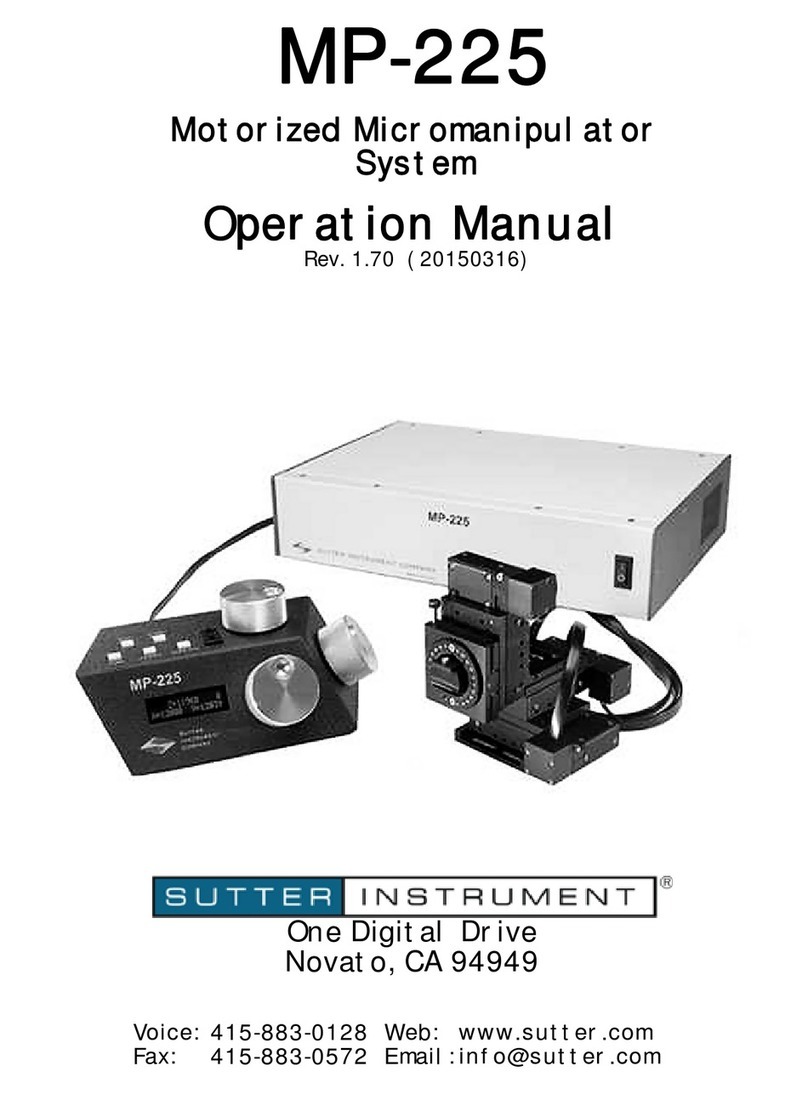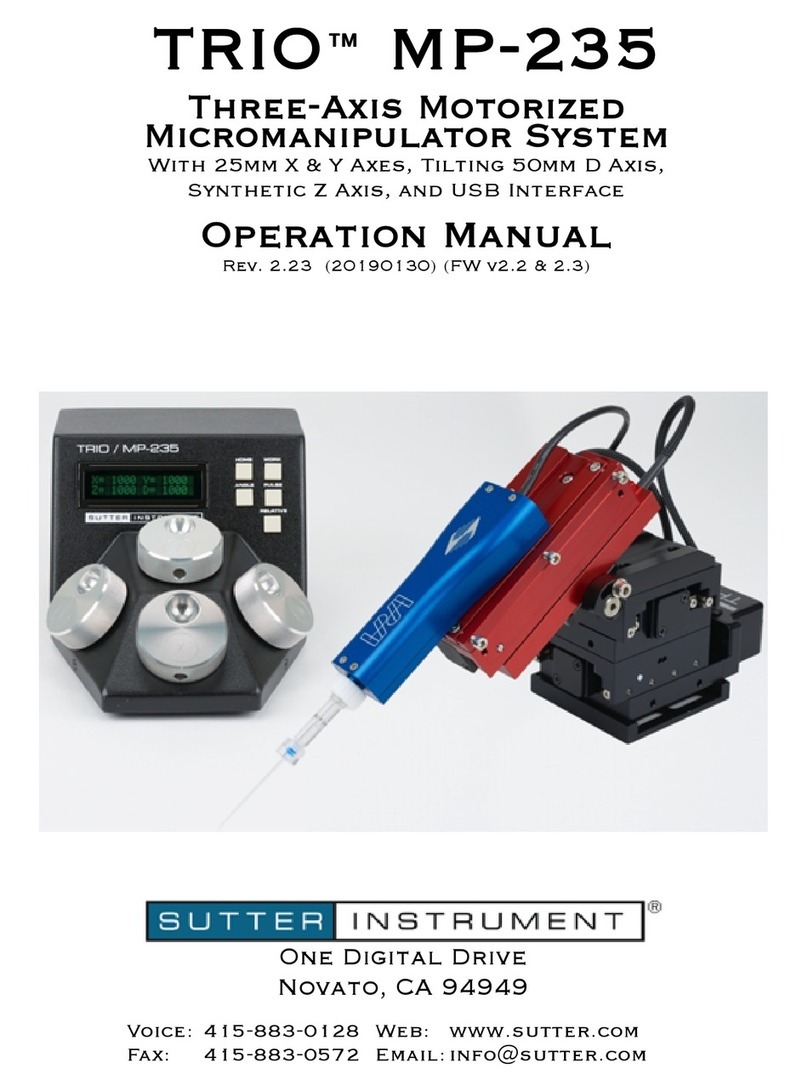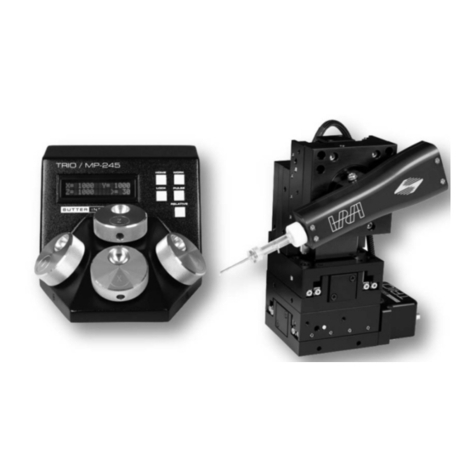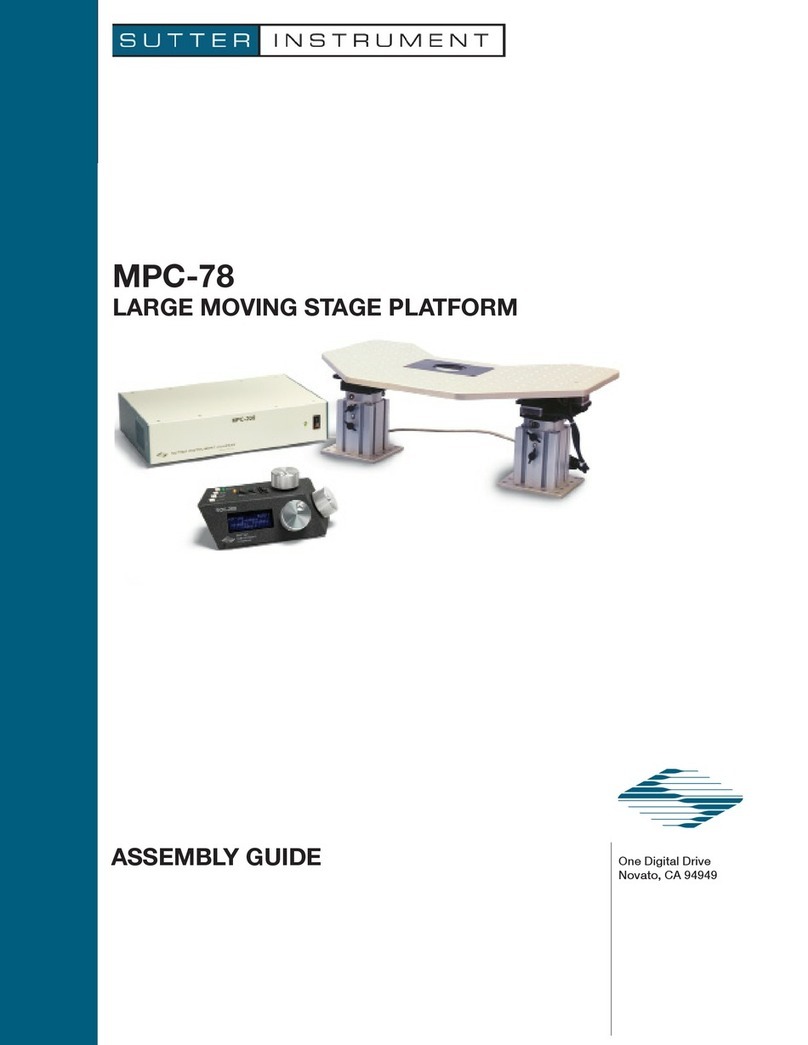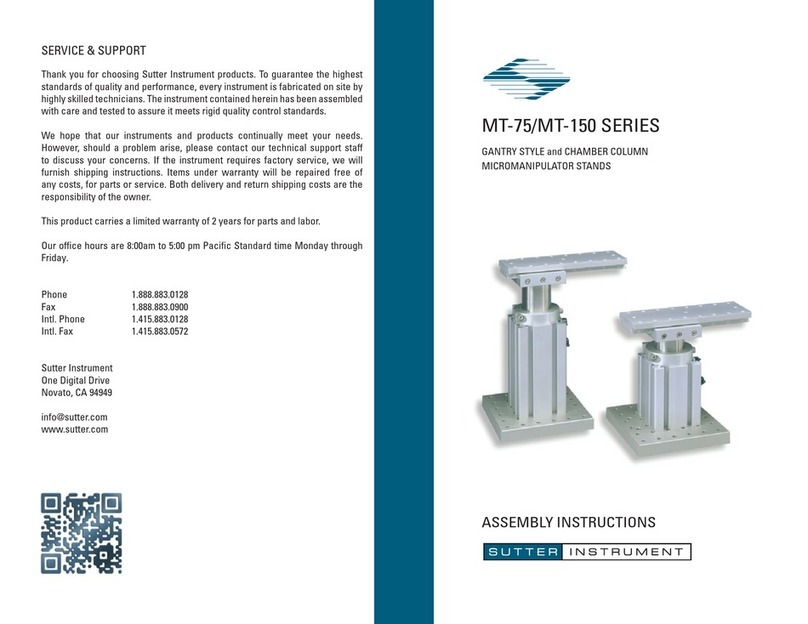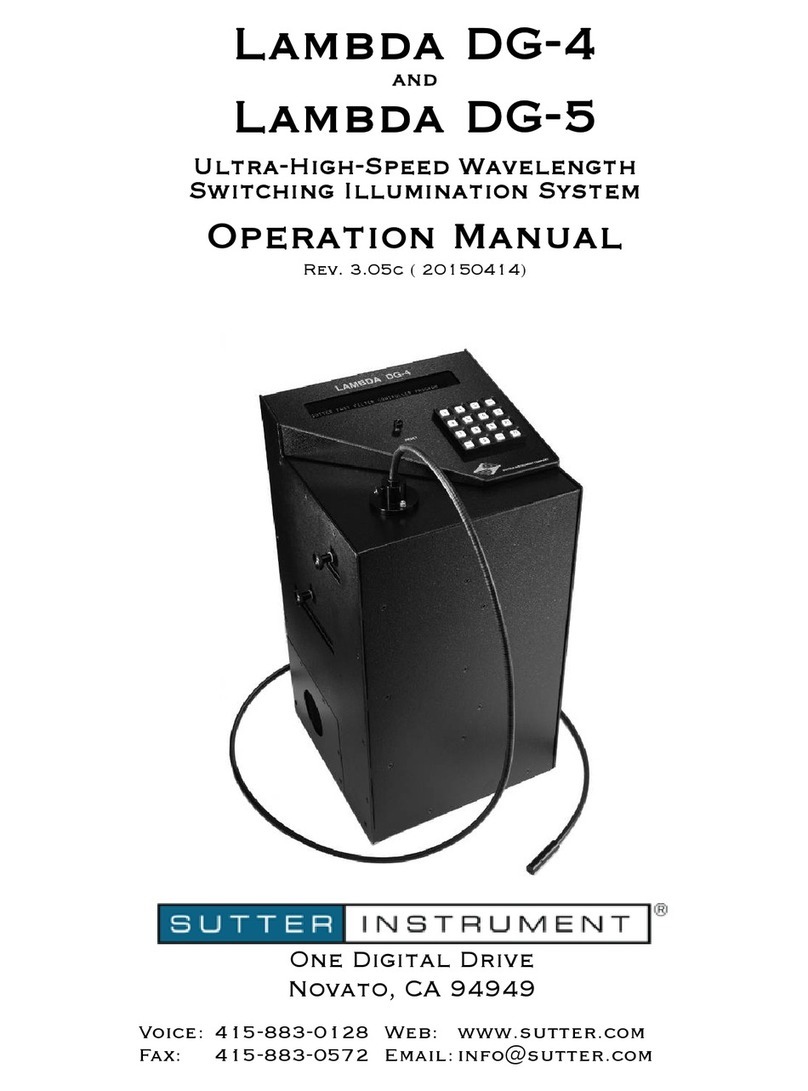Running a Ramp Test
It can be useful to use a RAMP value as a starting point for the heat value. The RAMP value is an empirical measurement of the laser
output required to work the glass. The RAMP value is unique for each combination of glass and FIL value.
1. Access any program
2. Press <CLR>. This will bring up a screen asking if you want to clear the program. Key <0> for no.
3. There will now be a list of control functions on the screen, press <1> to access the RAMP test function.
4. Load a piece of glass, close the lid, and press <PULL>. You will be prompted enter a filament (FIL) value. Enter the value you would
like to use for your program and press <ENTR>.
5. The puller will increase the laser output until the glass just begins to melt. The value at which this occurs is the RAMP value. Note
this somewhere, as the puller does not retain it in memory.
Maintenance and Troubleshooting
While Sutter Instrument Co. is always happy to support our products, some basic maintenance and troubleshooting can be done by
users to prevent and address minor problems and simplify the diagnosis of larger issues.
1. Cleaning the Retromirror:
The retromirror should be cleaned weekly or bi-weekly, depending on the frequency of use. Residue from the glass is deposited on
the retromirror by the laser. If not removed, the residue is baked into the mirror on subsequent pulls, necessitating the mirror’s
replacement. The mirror should also be cleaned after finishing a thermal paper test.
i. Remove the shroud.
ii. Observe the curved surface of the retromirror using the mirrored tile which you received with the puller. A clean
retromirror is equally reflective across its whole surface
iii. Wet a piece of optical tissue or lens paper with 100% ethanol, isopropanol, or acetone. Never use any other type of cloth
or cleaners
iv. Clean the mirror by wiping it several times and allowing the solvent to evaporate. Do not touch wet portions of the lens
paper with ungloved fingers. This can transfer oils from your hands onto the mirror.
v. If any cloudy, discolored, or unreflective spots remain the mirror is damaged and must be replaced.
vi. Replace the shroud.
2. If a program which previously worked consistently has become inconsistent, check the tilt micrometer alignment with a thermal
paper test, clean the mirror, and confirm that the glass is being properly loaded.
3. If you believe the puller is failing to heat the glass, do the following and then reach out to Sutter technical support
i. Run a thermal paper test and check that the tilt micrometer is properly aligned.
ii. Clean the retromirror and check for damage
iii. Run default program 2 using Q100-70 glass, a sample of which was provided with your puller, and note the information
given in the post-pull report.
iv. Check the label on the back of the instrument for the serial number of this instrument. This is on a silver sticker on which
a bar code is also printed.
